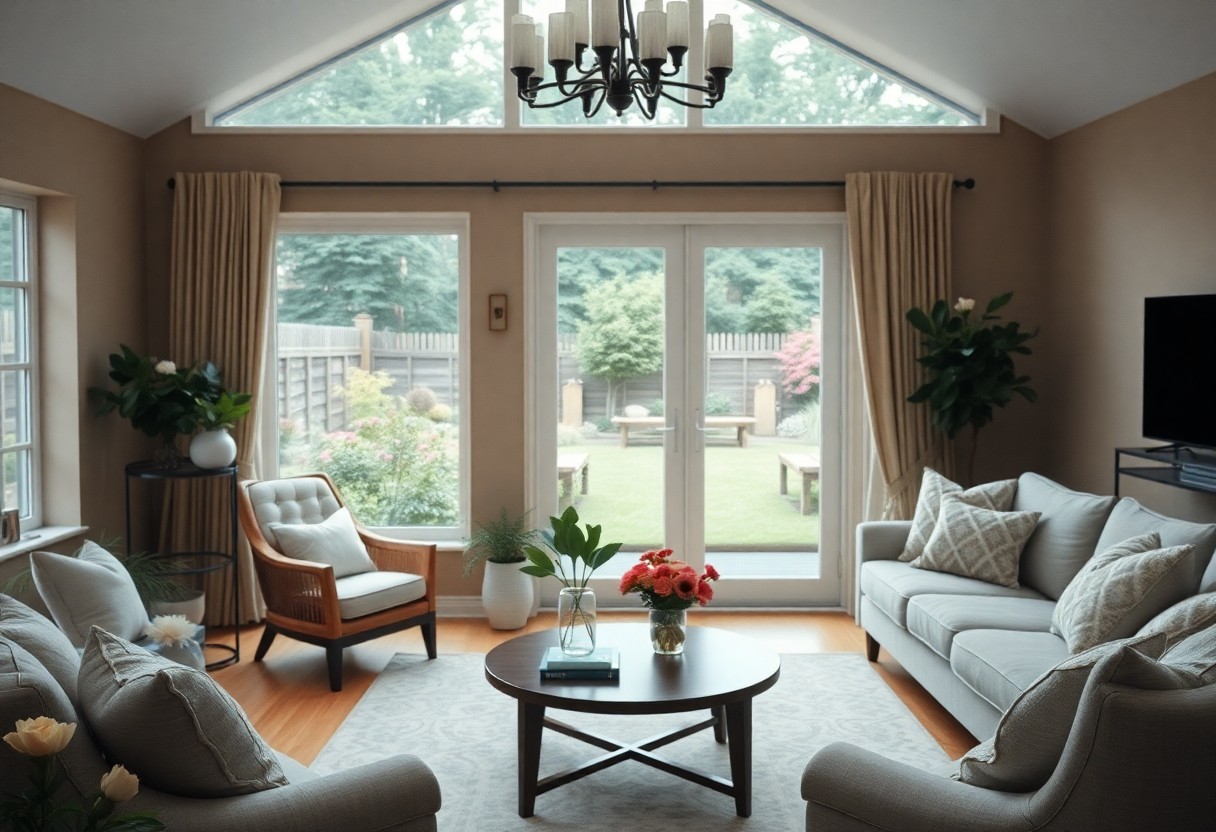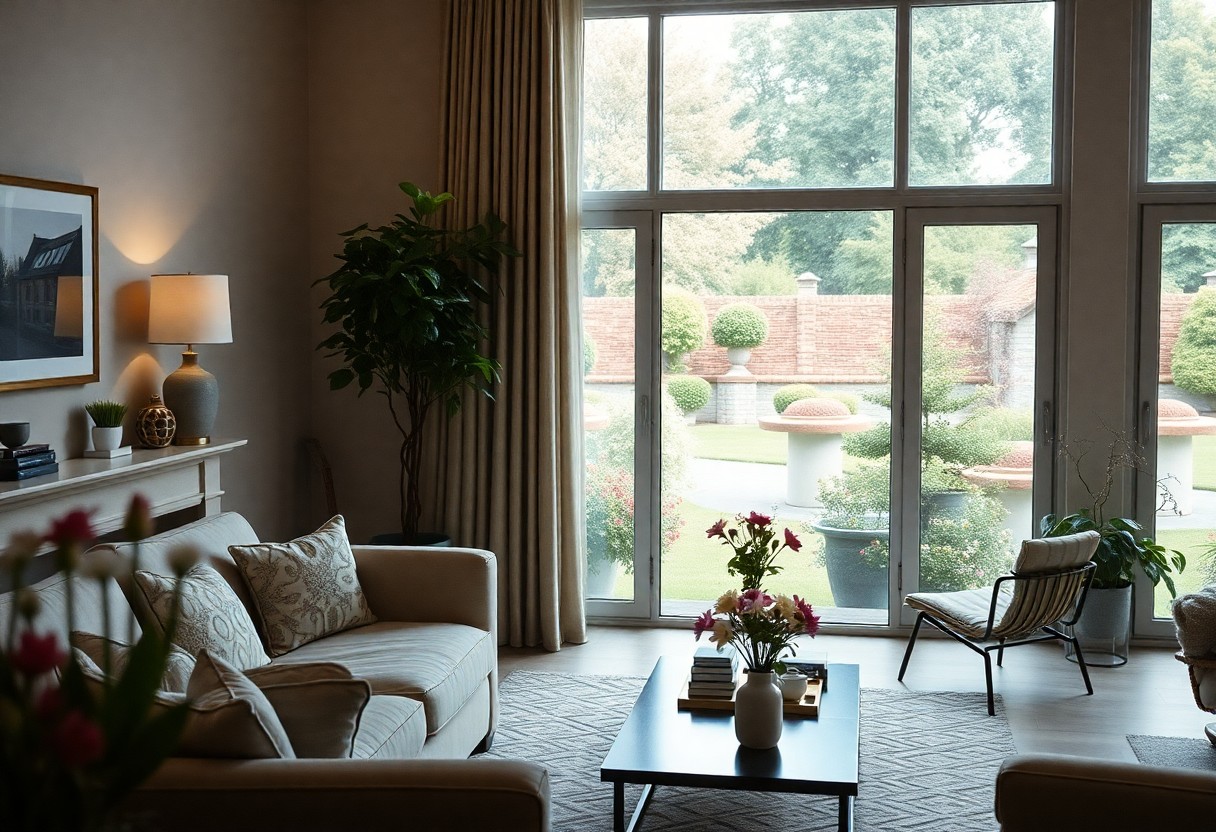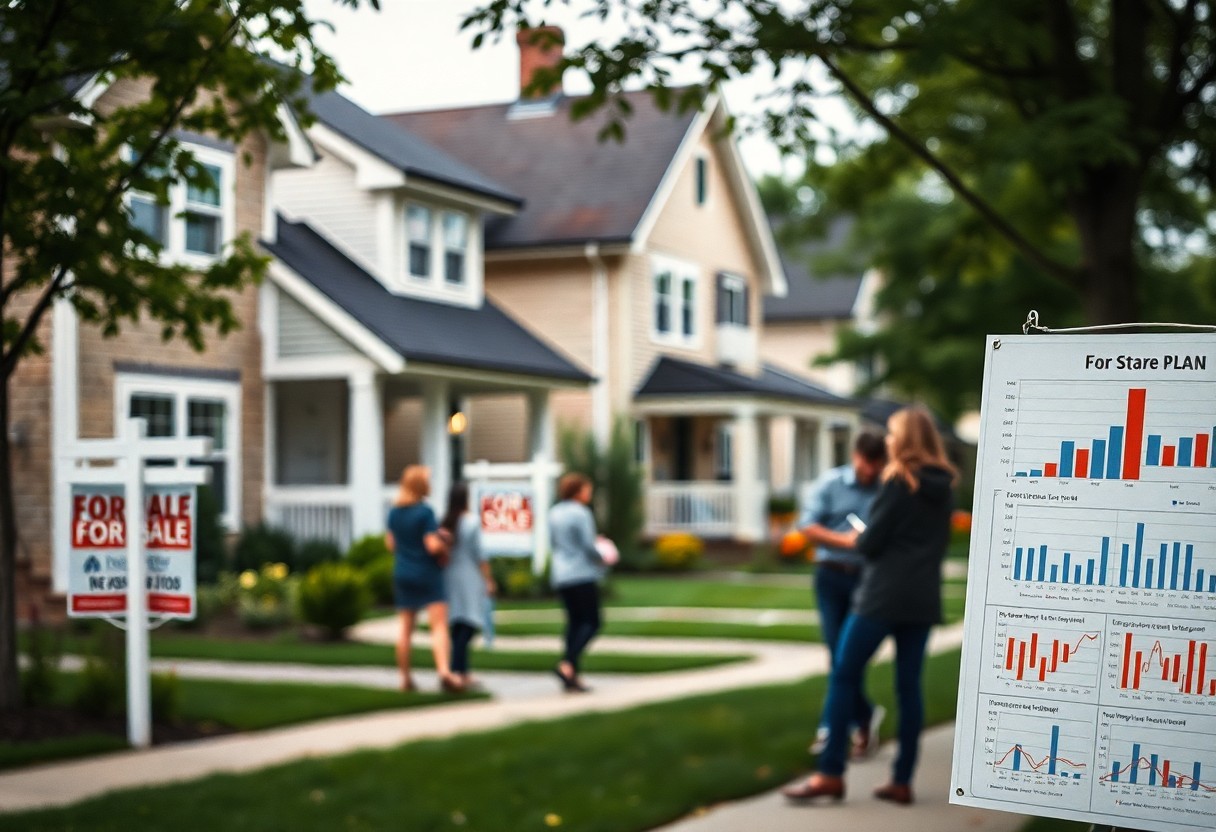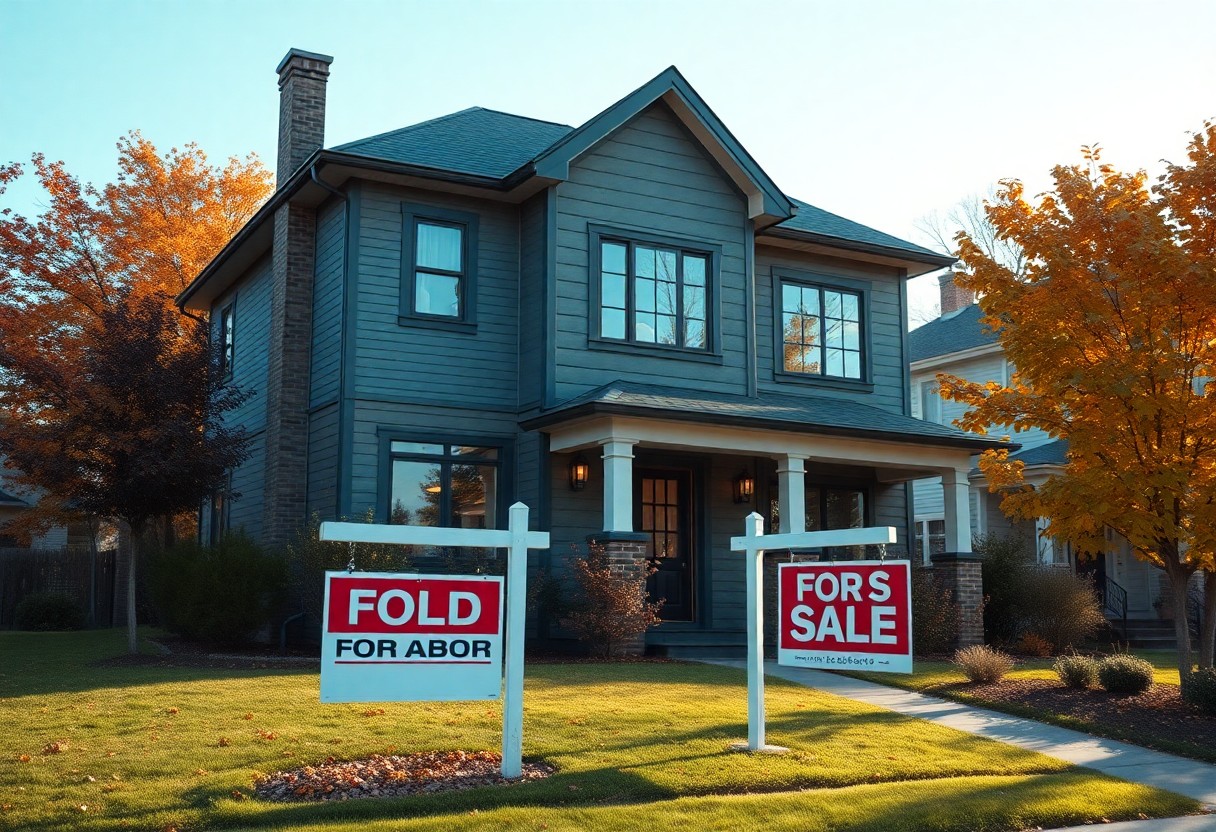There’s no doubt that high-quality photos can significantly impact the sale of your home. When prospective buyers browse listings, it’s your images that can either captivate them or push them to the next option. By following specific techniques, you can create stunning visuals that not only showcase your home’s best features but also convey its charm and warmth. In this guide, you’ll learn how to leverage lighting, angles, and staging to ensure your home stands out in a crowded market and sells faster.
Key Takeaways:
- Utilize natural light to enhance the appearance of each room, capturing photos during daylight hours for the best effect.
- Declutter spaces to create a clean and inviting aesthetic, allowing potential buyers to envision themselves in the home.
- Invest in high-quality equipment or hire a professional photographer to achieve clear, well-composed images that showcase the property effectively.
- Highlight unique features and selling points, such as spacious layouts, updated appliances, or beautiful outdoor areas, in your photography.
- Take wide-angle shots to give buyers a sense of the room dimensions and flow, making spaces appear larger and more appealing.
- Stage rooms appropriately with tasteful decor to enhance visual appeal and convey a lifestyle buyers could aspire to.
- Edit photos carefully to ensure they are bright and inviting, but stay true to the property’s actual appearance to set realistic expectations.

Understanding the Importance of Photography
To effectively sell your home, you must recognize the significance of quality photography. High-quality images not only showcase your property’s best features but also create an emotional connection with potential buyers. Consider utilizing the 20-Step Checklist to Prepare Your Home for Real Estate to ensure your space is camera-ready. Investing in professional photography will ultimately enhance your home’s appeal and expedite the selling process.
The Impact of Images on Home Sales
With the majority of home buyers starting their search online, the impact of professional images cannot be overstated. High-quality photos attract more interest and can lead to quicker sales, as they provide a first impression that captivates potential buyers.
How Quality Photos Influence Buyer Perception
Assuming you invest in high-caliber photography, your property will likely stand out in a crowded market. Quality images have the ability to highlight your home’s unique features and create a favorable perspective for viewers, making them feel more inclined to schedule a showing or make an offer.
Understanding how photographs influence buyer perception is vital. When potential buyers see crisp, vibrant images showcasing your property’s spacious layout and natural light, it fosters a sense of desire and possibility. Conversely, poor-quality images may lead them to perceive your home as less appealing or undervalued. Quality photos convey your commitment to presenting the property well, instilling confidence in the buyer and compelling them to take action.
1. Clean and declutter your space thoroughly.
2. Use natural light for bright, inviting images.
3. Stage rooms with tasteful furniture and decor.
4. Capture wide-angle shots for a spacious feel.
5. Highlight unique features and outdoor spaces.
6. Edit photos for enhanced color and clarity.
Essential Tips for Capturing Stunning Home Photos
The key to taking stunning home photos lies in several necessary tips. Keep in mind the following aspects to elevate your photography:
- Utilize natural light to enhance your spaces
- Staging: Remove clutter and personal items
- Choose angles that highlight the room’s best features
- Use a tripod for stability
- Post-processing can make a significant difference
Perceiving the importance of these elements can transform your property images into captivating visual stories.
Choosing the Right Time and Lighting
For optimal results, shoot your photos during the golden hours—either early morning or late afternoon—when the light is soft and flattering. Avoid harsh midday sunlight, which can create unflattering shadows and overexposure. Open curtains and blinds to let in as much natural light as possible, and consider the direction your home faces to capture its best side.
Using the Best Equipment and Techniques
On your journey to capturing amazing home photos, selecting the right equipment is vital. Invest in a good quality camera or a smartphone with a robust camera feature. Utilize a wide-angle lens to showcase more of each room, and implement basic techniques like adjusting for vertical lines and ensuring your images are crisp and clear.
Techniques such as using a tripod can significantly improve your photo quality by reducing blurriness, while experimenting with HDR (High Dynamic Range) settings can help balance out lighting extremes in a room. Additionally, consider taking multiple shots from different angles and post-processing your images to enhance colors and contrast. Using wide-angle lenses can provide a better understanding of room dimensions; however, be cautious as it can also distort angles if misused. Prioritize capturing the true essence of your space, ensuring that each image resonates with potential buyers.
Staging Your Home for Photography
After you decide to sell your home, staging it effectively for photography can make a significant difference in attracting potential buyers. A well-staged home not only showcases the property but also helps viewers visualize their future in the space. With some thoughtful selections and arrangements, your home can appear more inviting and desirable in photographs, ultimately helping it sell faster.
Decluttering and Depersonalizing Spaces
Even the most beautiful homes can be hard to sell if they are cluttered or filled with personal items. Start by removing excess belongings and family photos. This creates a clean slate that allows potential buyers to envision themselves in your home. Focus on minimizing your décor while ensuring that each room retains its function and appeal.
Highlighting Key Features and Room Flow
Your goal in staging is to accentuate your home’s strong points and create an inviting flow from room to room. Emphasize the following key features that buyers typically look for:
- Natural light sources
- Spaciousness of rooms
- Modern finishes and upgrades
- Functional layouts that facilitate movement
- High-quality materials in kitchens and bathrooms
The right staging can transform your home’s atmosphere and highlight its best aspects to potential buyers.
Depersonalizing your space not only makes it easier for potential buyers to imagine their lives there; it also ensures that your home stands out in the competitive real estate market. Highlight the strong features of your home while eliminating any distractions that may detract from its appeal. Focus on the following aspects:
- Neutral paint colors that appeal to a broad audience
- Well-maintained landscaping that enhances curb appeal
- Clean and decluttered surfaces in every room
- Strategic furniture placement to maximize space
- Functional and well-organized storage areas
The right attention to detail during the staging process can significantly impact how swiftly your home sells.

Editing Your Photos for Maximum Appeal
All the best photographs can become even more captivating through thoughtful editing. By adjusting elements such as brightness, contrast, and saturation, you can enhance your images, highlighting the home’s features and creating an inviting atmosphere. Simple tweaks can make your property stand out in a crowded market, appealing to potential buyers before they even set foot inside. Taking the time to edit your photos effectively will help ensure your home sells faster.
Basic Editing Techniques to Enhance Images
Your photos can benefit greatly from basic editing techniques that elevate their appeal. Start by cropping to remove distractions and focusing on key features, adjust exposure to brighten dark areas, and enhance colors to create an inviting feel. Utilize sharpening tools to define edges, and consider applying light filters to create a cohesive look. These straightforward adjustments can turn good images into stunning ones and make your home even more enticing to prospective buyers.
Avoiding Common Editing Pitfalls
Editing can enhance your home photos, but it can also lead to mistakes that detract from their appeal.
With overly aggressive editing, you risk creating images that appear unnatural or over-processed. It’s imperative to avoid excessive color manipulation that makes your home seem unrealistic or darkening shadows too much, which can obscure important details. Keep your edits subtle and focus on enhancing the home’s best qualities. Along with maintaining a natural look, avoid applying the same filter or style to every image, as it can create a disjointed presentation. Strive for consistency, but ensure each photo reflects its unique charm.
Additional Factors to Consider
Now that you’ve mastered the art of photography, consider these additional factors to enhance your home’s appeal:
- Optimize natural lighting
- Focus on landscaping
- Declutter and stage your home
- Showcase unique features
This will create a lasting impression, ensuring your home stands out in a competitive market.
Understanding Your Target Market
While defining your target market is imperative, it’s equally important to identify their specific needs and preferences. Tailoring your photos to showcase features your potential buyers value—like family-friendly spaces or modern kitchens—can significantly enhance your appeal.
Leveraging Social Media and Online Listings
Social media is an invaluable tool for showcasing your home to a broader audience. Utilize platforms like Instagram and Facebook to share your stunning photos, and engage potential buyers with stories that resonate. Feature your home in high-traffic online listings to maximize visibility.
With the right approach, you can amplify your home’s exposure and attract more interested buyers. Use striking imagery and compelling captions to capture attention on social media. Highlight unique selling points, provide virtual tours, and create engaging posts that inspire buyers. This blend of visual appeal and strategic outreach can lead to faster sales and higher offers.
To wrap up
Taking this into account, capturing stunning photos of your home involves careful planning and attention to detail. By ensuring proper lighting, decluttering spaces, and utilizing high-quality equipment, you can create images that highlight your property’s best features. Experimenting with angles and showcasing outdoor areas will further enhance the appeal of your home. Ultimately, compelling photography can significantly impact the speed of your sale, drawing in potential buyers and making your property stand out in a competitive market.
FAQ: How To Capture Stunning Photos That Sell Your Home Faster
Q: Why are professional photos important when selling a home?
A: Professional photos can significantly enhance the appeal of your home in listings. High-quality images showcase the property’s best features, create an emotional connection with potential buyers, and can help it stand out in a crowded market. Homes with professional images tend to attract more views and can sometimes sell faster and at better prices.
Q: What equipment do I need for taking high-quality real estate photos?
A: While a professional camera can help, you can also achieve great results with a smartphone that has a good camera. To enhance your photos, consider using a tripod for stability, a wide-angle lens for capturing more space, and good lighting equipment to ensure your photos are well-lit and inviting.
Q: How should I prepare my home before the photo shoot?
A: Preparing your home involves decluttering, deep cleaning, and staging the space. Remove personal items and excess clutter to allow potential buyers to envision their own lives there. Consider using neutral colors for decor and arranging furniture to highlight the best features of each room. Good natural lighting can enhance the overall look, so open curtains and turn on lights if necessary.
Q: What time of day is best for photographing a home?
A: The best time to capture photos of a home is during the “golden hour,” which is shortly after sunrise and before sunset. The lighting during these times is softer and warmer, creating a more inviting atmosphere. However, for interiors, consider capturing images when there is plenty of natural light streaming in, which is usually mid-morning or mid-afternoon.
Q: Should I edit the photos after I take them?
A: Yes, editing can enhance your photos significantly. Use editing software to adjust brightness, contrast, and colors to ensure your images are vibrant and true-to-life. However, avoid over-editing, as this can misrepresent the property and lead to disappointment during viewings.
Q: How many photos should I include in my listing?
A: Aim to include a minimum of 20 high-quality photos in your listing. This should cover all key areas of the home, including the exterior, main living spaces, bedrooms, bathrooms, and any special features or amenities. A well-rounded selection gives potential buyers a comprehensive view of what the property has to offer.
Q: Can staging and decor affect the outcome of my photos?
A: Absolutely. Staging and decor play a significant role in how appealing your photos will be. Well-staged homes with tasteful and inviting decor can create emotional responses in potential buyers. Simple touches like fresh flowers, stylish furniture placements, and neutral color palettes can make the space feel more welcoming and help highlight its potential.



